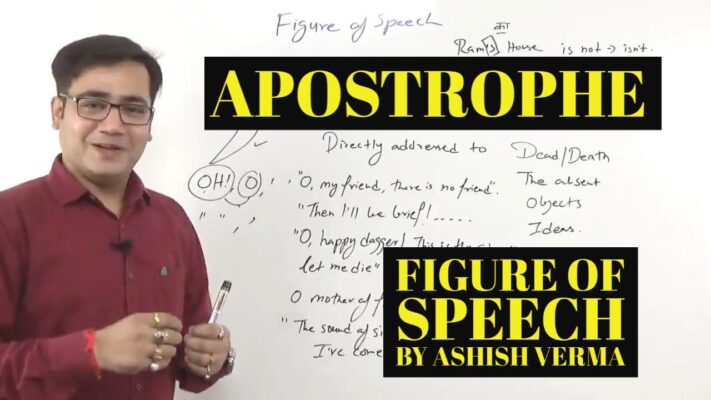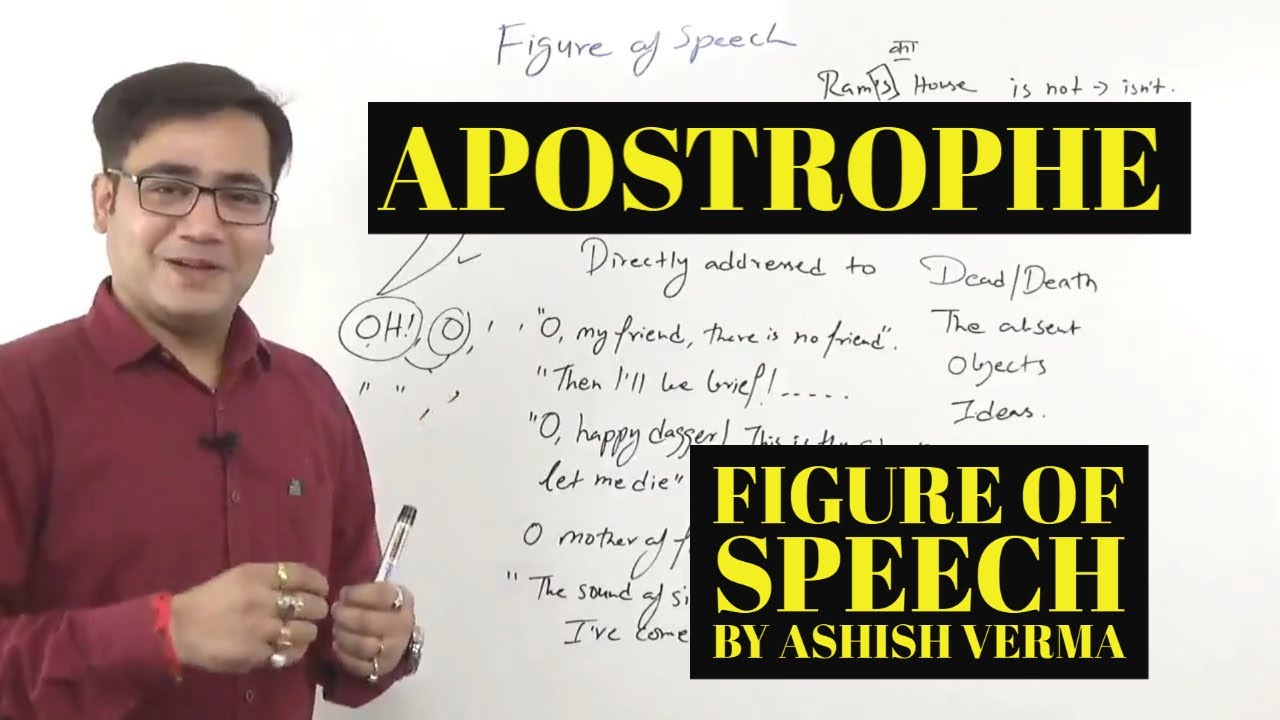Apostrophe (Figure of Speech)
The apostrophe, as a figure of speech, is a powerful tool for writers and poets to add depth and dimension to their work. It involves directly addressing someone or something that is not present or cannot respond, creating a sense of intimacy and immediacy.
Here’s a breakdown of the key aspects of apostrophe:
What it is:
- An exclamatory figure of speech where the speaker breaks away from addressing the general audience to directly address a specific entity.
- This entity can be:
- Absent or deceased person (e.g., a historical figure, a character in a story)
- Inanimate object (e.g., nature, a physical object)
- Abstract concept or idea (e.g., love, death, time)
- Personified thing (e.g., animals, forces of nature)

Why it’s used:
- Express strong emotions: Apostrophe allows the speaker to directly convey their feelings towards the addressed entity, making them more vivid and impactful.
- Heighten dramatic effect: In plays and poetry, apostrophe can create dramatic tension and engage the audience by drawing them into the speaker’s emotional world.
- Add depth and complexity: Addressing non-present entities allows writers to explore different perspectives and add layers of meaning to their work.
Examples:
- Hamlet’s famous soliloquy: “To be or not to be, that is the question…” (Addressing the abstract concept of existence)
- John Keats’ poem “Ode to a Nightingale: “Thou wast not born for death, immortal Bird!” (Addressing the nightingale as a personified being)
- Carl Sandburg’s poem “Chicago: “Hog Butcher for the World, Tool Maker, Stacker of Wheat, Player with Railroads and Freight Handler to the Nation…” (Personifying the city of Chicago)
Additional notes:
- Apostrophe is often used in conjunction with other literary devices, such as imagery, personification, and metaphor.
- The use of the vocative case (“O Death,” “Come, Sleep!”) is a common feature of apostrophe.
- While the punctuation mark “apostrophe” can be used to indicate possession or contraction, it is not directly related to the figure of speech.
I hope this information provides a comprehensive overview of the apostrophe as a figure of speech. Feel free to ask if you have any further questions or would like to explore specific examples in more detail!

